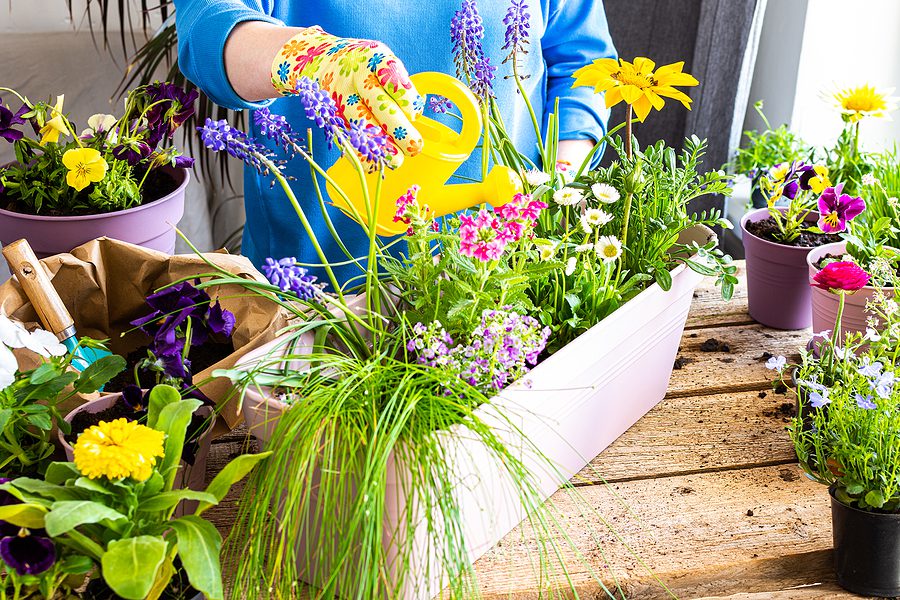Great Action Plan to Prepare Your Albuquerque Garden for the Spring Season of 2023

Get off to a solid start in spring with this plan of Albuquerque garden action. An entirely new growth season is imminent. Do you feel ready? To get you started, Here is an action plan to make your Albuquerque garden look glorious in spring 2023.
Get rid of those weeds.
If you notice any weeds, whether they are holdovers from last year or new ones that have emerged in the chilly weather, get rid of them now while the ground is pliable. The dirt will be easier and drier in the summer, making removal much simpler. Remove them before they can spread their seeds and become a problem.
Plants that bloom in July should be pruned.
Shrubs that bloom between late June and late September are best pruned towards the end of winter or the beginning of spring. These include the rose-of-Sharon, St. John’s wort, crape myrtle, summer-blooming spirea, and vitex, as well as the butterfly bush, beautyberry, caryopteris, clethra (summersweet), smooth hydrangea, panicle hydrangea, and hydrangea. Because of these blossoms on new wood, there is no need to worry about severing dormant flower buds from last year’s growth. Spring flowering shrubs, including azalea, rhododendron, weigela, lilac, forsythia, and viburnum, should not be pruned until after blooming.
Apply fertilizer to the planting areas.
Apply granular fertilizer around trees, shrubs, and perennials once the earth thaws. It is important to use the correct product for the type of plant you are growing and to meet the plant’s unique nutritional demands as outlined by a soil test. Ensure that your trees and plants have not suffered any harm throughout the winter. Remove any branches that are damaged, dead, or broken. Cut back any evergreens that have had dieback at their tips due to the winter weather.
Remove the brown, dead leaves from last year’s perennial blooms by raking or cutting them off.
Remove the wilted leaves of perennials.
Remove the dark, frost-damaged leaves from your perennial flowers now if you didn’t do so last autumn. It will make space for the new growth expected to emerge this year. In the spring, if you find that any of your perennials have partially emerged from the ground due to winter freezing and thawing, press them back into the soil. Give them water and a layer of mulch (maybe an inch or two) around their bases.
Separate perennial plants into new sections.
Most perennial flowers should be dug and divided right before new growth begins when the plants are dormant. As soon as you have moved the separated clumps, replant them and give them plenty of water. You may either compost the extra food or give it away. There is one notable exception, however: early-season perennials that are either in flower or are preparing to blossom. After blooming or at the beginning of October, they should be split.
Remove leaves matted or excessive from the grass and ground cover beds.
Pick up tangled piles of leaves.
Small amounts of blown-in leaves under and around trees, shrubs, and perennials can be left and mulched over. Could you not throw them away? However, matted leaves should be scraped or blown off the lawn and out of the beds to allow the grass and evergreen groundcovers to absorb sunlight. Use one of three available grass seed blends to fill in the bald patches on your lawn. Take down the seasonal decorations. As the risk of frost decreases, you may take down the burlap barriers, wraps, and other winter protection you put around your landscaping plants. Also, it would help if you took the stakes out of newly planted trees after a year.
We need to stop problems before they start.
If crabgrass has been a problem, spread Crabgrass Control Plus Lawn Food over the lawn and use a granular weed preventer like Preen® Garden Weed Preventer in the flower beds. When the dandelions are in full bloom, you know it’s time for the former, and when the forsythia bushes are in blossom, you know it’s time for the latter. Applying a product like Spring Fertilizer Weed and Feed and Crabgrass Preventer to your lawn in the spring will do more than eliminate weeds; it will also feed your grass and discourage the growth of any new weeds that may appear.
Beds at the very edge.
All garden beds should have clean, crisp edges trimmed at the end of winter using either a long-handled, human-powered edging tool or a power edger. In addition to making the landscape seem better, this also serves as a “lip” to hold mulch in place until the earth has warmed regularly throughout the season.
